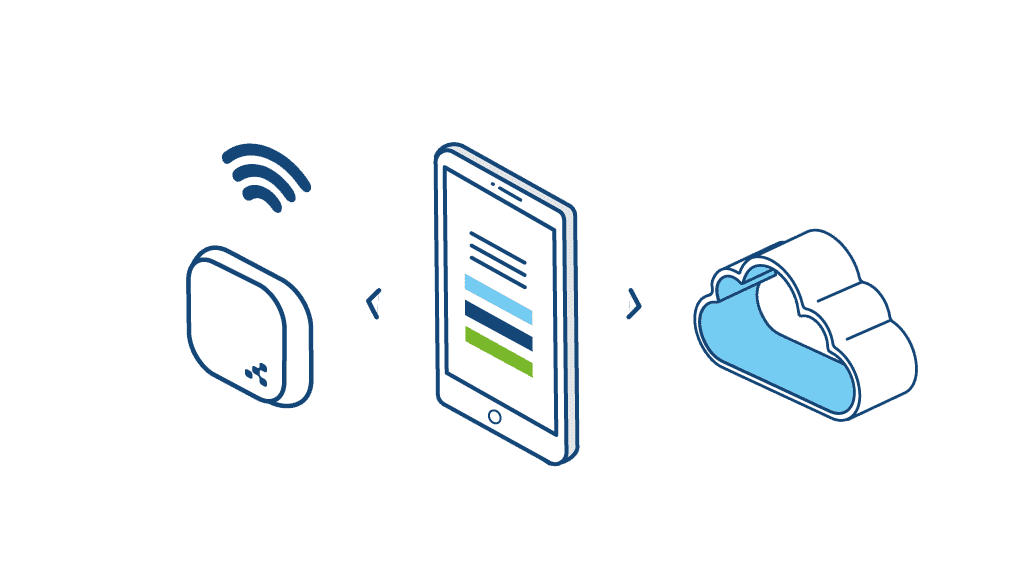With the advancement of the Internet of Things, data transmission technologies needed to develop. One of the best known is BLE (Bluetooth Low Energy), which is designed to facilitate IoT applications.
What is BLE?
Simply put, Bluetooth Low Energy (BLE) is a type of bluetooth that consumes much less energy – about 10% compared to classic bluetooth. This is because the latter was created only for the transmission of data, as when we connect our cell phone to the car stereo to play a song, for example.
BLE was also developed for data transmission, but with a strong bias to maximize battery savings, precisely to ensure a long time for information transmission.
The protocol gained strength in 2010, with the emergence of its 4.0 version. It had its widespread use since then because it easily allowed short and medium range wireless connections.
Its characteristics make a BLE device act most of the time in sleep mode, activated only to make connections that last milliseconds. Therefore, it is ideal for applications that inform sporadically.
Why is BLE important to the Internet of Things?
In a simplified way, an Internet of Things system works through a connection between two devices (usually, through a wireless system) and with the Internet, to communicate and share data from these devices.
Through its energy efficiency, BLE has quickly become one of the main options for Internet of Things applications. Devices that work via bluetooth can work for long periods without draining the battery, transmitting data periodically.
To give you an idea, a BLE tag has an average duration that varies from 1.5 to 6 years, depending on the required range and the frequency of pulse emission that it has configured.
Finally, it is a protocol with low implementation cost: due to the omnidirectional signal, the physical structure necessary for the detection of a BLE tag is not very complex and ease to install in the environment.
BLE vs Other Protocols: are there alternatives?
Undoubtedly, other options perform data transmission to IoT devices. One of the main alternatives is Zigbee, a wireless network that also has low energy consumption and reduced cost.
However, Zigbee does not allow high data transmission rates. Therefore, it is ideal for applications that will not need major processing, such as lighting control, for example.
Another well-known option is RFID. Widely used in industry and asset tracking, the system consists of an antenna and transmitter tags, which accompany the object to be tracked.
But beware: RFID only works if the antenna and object are in the same direction. That is why the protocol is one of the most used options for managing inventory, or tracking objects that do not have free circulation.
DOWNLOAD OUR E-BOOK ON INDOOR LOCATION PROTOCOLS FOR FREE
Main applications of BLE
Beacons (BLE-emitting devices) was already been successfully tested in several sectors: retail, industry, logistics, healthcare and much more.
As it offers a good experience with low cost, it is a great option for those who need more continuous tracking, with high data processing and precision. Thus, the protocol has been widely used for monitoring people and mobile equipment in closed environments.
Still be used in marketing, delivering personalized messages to consumers according to their location.
How Novidá uses BLE in its solutions
Realizing the potential of BLE, Novidá bet on this protocol to develop most of its solutions. We created an indoor location system using beacons or smartphones.
Through BLE, these devices connect with sensors spread within a business environment. Through the frequency of the signal emitted, it is possible to locate people or equipment on the plant.
Thus, the manager monitors – in history and in real time – all the movement of resources during the workday. Thus, he can quickly identify bottlenecks, optimize routes and assess the performance of his employees.
Do you want to understand how our solution works and how BLE can bring great benefits to your company? Schedule a conversation with one of our experts.





